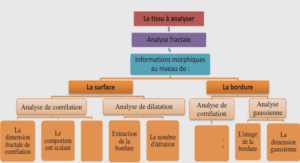HUILE VEGETALE COMBUSTIBLE, CAS DE JATROPHA
L’huile végétale de jatropha offre l’avantage d’avoir des propriétés comparables à celles du gasoil. Ce carburant oxygéné (huile végétale) peut également contribuer à la réduction d’émissions de gaz à effet de serre. La recherche expérimentale actuelle s’intéresse beaucoup à l’huile de jatropha (plante végétale non comestible) qui peut être employée comme un carburant alternatif dans un moteur Diesel. La grande viscosité de l’huile de jatropha se réduit durant un processus de préchauffage. Elle devient même comparable au carburant Diesel au delà de 110 degrés Celsius (110 ° C).o Origine : Jatropha Curas: plante originaire de l’Amérique Latine o Famille : Euphorbiacées. o Appellation: valavelona, voanongo, tanatanampotsy, savoa, voanjohazo o Description de la plante:
– arbrisseau mais pouvant atteindre 5m – feuilles simples et alternées allant jusqu’à 17 cm de long et 15 cm de large ; – inflorescence en corymbe et terminale, pétales de couleur vert blanchâtre et Inde, Philippines, Indonésie, Afrique du Sud, Burkina Faso, Mali, Ghana, Malawi, Zambie et dernièrement Madagascar ; les pays producteurs de jatropha sont de plus en plus nombreux à se lancer dans l’aventure de production du biodiesel.
Variétés et types
Il existe plusieurs espèces originaires d’Amérique du Sud et centrale. Les plus connues sont : – Jatropha curcas dont la graine fournit une huile à usage industriel et peut être utilisée comme biocarburant ou colorant. En Afrique, elle est appelée pourghère ; – Jatropha gossypifolia dont l’huile est purgative et la racine utilisée contre la lèpre ; – Jatropha integerrima à la floraison rouge décorative ; – Jatropha multifida (arbre corail) dont les feuilles sont consommées au Mexique ; – Jatropha podagrica, plante ornementale très prisée ; – Jatropha phyllacantha, plante du Brésil aussi appelée favela qui donna son nom aux quartiers déshérités de la plupart des villes du pays.
PROPRIETES
L’huile de Jatropha est de très bonne qualité, elle possède les propriétés suivantes : Masse volumique Entre 15 et 40 °C, la masse volumique de l’huile de jatropha est de 0,91 – 0,920 kg/l Pouvoir calorifique L’huile de jatropha a un pouvoir calorifique inférieur (PCI) massique approximativement de 39667 KJ/kg et un PCI volumique d’environ 36400 kJ/dm3. Le pouvoir calorifique spécifique supérieur et le pouvoir calorifique inférieur sont des grandeurs pour caractériser le contenu énergétique des combustibles ;layers, the stratification tends to zero in such a way that the propagation condition of linear internal waves is no longer satisfied: . So, the pycnocline is the only region where internal wave can propagate hence it becomes the waveguide of internal waves. In such configurations, it may be A simulation, Sim0, with subcritical topography, is shown in Figure 2 (d) after 5.6 forcing periods (t=90s). The primary four plots (a,b,c) are vertical velocity analytical fields calculated according to the stratification profile (∆ρ, δρ,hρ,H) and the forcing periodicity (T) based on vertical modes decomposition approach. As the topography is subcritical, an assumption is made that the amplitudes of the vertical modes are inversely proportional to the mode number ( . In these configurations, the vertical stratification profile is not linear, so the internal wave structure is more complex. In particular, the wavenumber, kn, is no more linearly proportional to the mode number, n, even if the wavenumber still grow with the mode number. Consequently, we assume that the amplitudes of the vertical modes are rather proportional to the wavenumber.
The first plot (a) takes into account only the first vertical mode and in each following plot we superimposed one additional vertical mode so the third plot (c) finally shows the first three vertical modes. The bottom plot (d) represents the vertical velocity output from Sim0 at t=5.6T. The main differences between theory (a,b,c) and the numerical experiment (d) are the representation of the generation area and the transition state. Indeed method of vertical modes rest on the assumption of a flat bottom and lead to a steady state solution. That’s why in our study, vertical modes are characterized only above flat bottom and not in the strait area (above the ridge) where they are generated.






